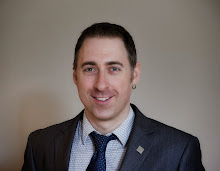For the fourth year running, November 26th saw the annual Safer Schools Forum, bridging local service organisations to the various high schools in the Ottawa-Carleton District School Board.
“This is our largest one yet with 150 students and 50 educators,” says Corinne Davison, a teacher at Sir Wilfrid Laurier secondary school. “Among that, we’ve got teachers and guidance counsellors, student success teachers and vice-principles.”
What started as an initiative to help create safe spaces in schools for rainbow youth dealing with bullying has taken on a greater significance for the broader perspective of education.
“Another goal of the conference this year is to provide a place where people can come together and network, fund support, and to find some resources,” Davison says. “If I have a student who needs this particular kind of information, who do I talk to? And if I want a presentation in my school, who do I turn to? Because as teachers, we’re teachers first. We’re trying to provide safe places definitely and to support our students, but we then need to be reaching out to the community for some more expert advice.”
“The education piece is really two-fold,” says Patsy Agard, incoming principle to the yet-unnamed high school being completed in Barrhaven. “You have the education of educators, and also you have the education of our students too in terms of what’s out there in terms of community resources, and even just support for each other.”
This year, it was estimated that twenty-three out of twenty-seven secondary schools in the board participated. While the board has been supportive of the forum, especially with the encouragement of superintendent Walter Piovesan, participation remains a decision of the individual school principals.
“Given that we have such a great turn out, I’d hazard a guess that most schools are seeing that it is necessary,” Davison says. “There’s no stepping around it – there’s bullying based on homophobia, bi-phobia and trans-phobia definitely in our schools. How do we address it? We start to educate ourselves, and that’s the point of the conference.”
“I think it is definitely a priority and becoming more so,” Agard says. “It’s now in the legislation that one of the mitigating circumstances for suspension can be around homophobic comments or comments around sexual orientation.”
“It is an issue that can no longer be ignored, but I also think that people have come to the recognition that this is important in creating safe spaces for our students.”
The Forum not only connected students and educators with fifteen different service providers in the Ottawa area, it also provided an opportunity for students to network with each other.
“With networking comes support,” Davison says.
Something else that has emerged from the forums is that some schools are broadening established Gay-Straight Alliance (GSA) clubs into “Diversity Clubs.”
“The kids came up with it after the first Rainbow Forums conference in 2004,” Davison says of her school’s diversity club. “They said that they wanted it to be broader – it doesn’t matter if you’re gay or straight, or it also doesn’t matter if you’re Wiccan or Muslim, or if you’re a boy or a girl, or if you don’t wear the right kind of jeans, or if your hair is funky, or whatever. It doesn’t matter.”
Davison says the students also determined they wanted it to be a “climate-changing” club, helping to change their school from a climate of tolerance to one of acceptance.
“The other thing with moving towards a diversity club is the whole idea that we have to fight for human rights for everyone,” Agard says. “We don’t want to start having kids categorised – so I belong to this club but not this one. It’s the whole idea that we all share so much together that we have to stand up when something is wrong, regardless if it’s based on race, religion, sexual orientation, or anything like that.”





